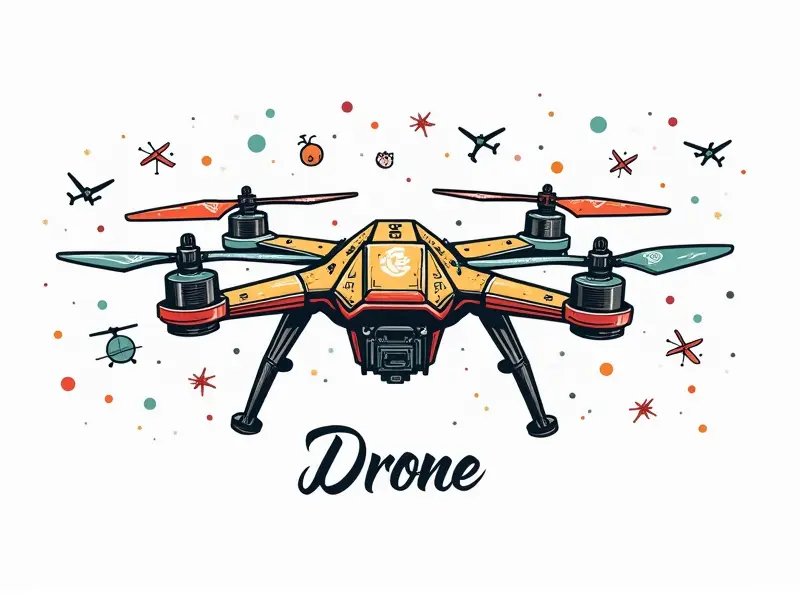Can I fly an FPV drone at night?

Is Night FPV Drone Flying Legal in Your Area?
Flying a first-person view (FPV) drone at night can be thrilling, but it's crucial to understand the legal landscape before taking off. Regulations vary significantly by country and even within regions of the same country. In the United States, for example, the Federal Aviation Administration (FAA) has specific rules regarding nighttime operations under Part 107 of the Code of Federal Regulations.
Before you embark on a night FPV adventure, consult your local aviation authority or drone regulatory body to ensure compliance with all applicable laws and guidelines. This includes obtaining any necessary permits or waivers that may be required for night flying.
Night Flying Rules for FPV Drones
The FAA's Part 107 regulations provide a framework for commercial and recreational drone operations, including nighttime flights. Key rules to consider include:
- Lighting Requirements: Your drone must be equipped with anti-collision lights that are visible from all directions.
- Visibility Conditions: You must maintain visual line-of-sight (VLOS) with your drone at all times, and the visibility conditions must allow for safe operation.
- No-Operation Zones: Avoid flying in restricted airspace or near airports without prior authorization.
Tips for Safe Night FPV Drone Flying
Flying an FPV drone at night presents unique challenges that require careful preparation and adherence to safety protocols. Here are some essential tips:
- Lighting Gear: Use high-intensity LED lights on your drone to enhance visibility.
- Battery Management: Ensure you have sufficient battery capacity for extended flights, as cold temperatures can reduce battery life.
- Flight Planning: Plan your route in advance and familiarize yourself with the terrain and potential hazards.
Best Practices for Night FPV Drone Use
To maximize safety and enjoyment during night flights, follow these best practices:
- Weather Conditions: Check weather forecasts before flying to avoid adverse conditions such as fog or rain.
- Emergency Procedures: Have a clear plan for emergency landings and potential equipment failures.
- Communication: Maintain open communication with your ground crew, especially if you are operating in a team setting.
Challenges of Night FPV Drone Flying
Night flying introduces several challenges that can impact the safety and success of your mission:
- Visibility: Reduced visibility makes it harder to spot obstacles and other aircraft.
- Temperature: Cold temperatures can affect battery performance and drone functionality.
- Noise Pollution: Nighttime noise restrictions may limit where you can fly.
The Risks of Night FPV Drone Operations
Flying an FPV drone at night comes with inherent risks that must be managed carefully:
- Collision Risk: The risk of colliding with other aircraft or structures is higher due to reduced visibility.
- Legal Consequences: Violating local regulations can result in fines and legal penalties.
- Personal Safety: Operating a drone at night increases the likelihood of accidents, such as tripping over obstacles or losing control of the aircraft.
How to Legally Fly FPV Drones at Night
To legally fly an FPV drone at night, follow these steps:
- Research Regulations: Understand and comply with local laws and regulations.
- Obtain Permits: Apply for any necessary permits or waivers from your aviation authority.
- Prepare Equipment: Ensure your drone is equipped with appropriate lighting and other safety gear.
Nighttime FPV Drone Regulations Explained
The regulations governing nighttime FPV drone operations are designed to ensure the safety of both pilots and the public. Key points include:
- Lighting Standards: Drones must be equipped with anti-collision lights that meet specific brightness requirements.
- VLOS Requirements: Pilots must maintain visual line-of-sight at all times, even in low-light conditions.
- No-Operation Zones: Certain areas are off-limits for nighttime operations to prevent interference with other aircraft and activities.
Secrets to Successful Night FPV Drone Flights
To achieve successful night flights, consider these insider tips:
- Practice Daytime Flying: Gain experience in daylight conditions before attempting nighttime operations.
- Use GPS Lock: Enable GPS lock on your drone to maintain stability and accuracy during flight.
- Invest in Quality Gear: Upgrade to high-quality FPV goggles with night vision capabilities for better visibility.
Can You Fly FPV Drones After Dark?
Flying an FPV drone after dark is possible, but it requires careful planning and adherence to legal requirements. By understanding the rules, preparing your equipment, and following best practices, you can enjoy safe and successful nighttime flights.
Legalities of Night FPV Drone Flight
The legality of flying an FPV drone at night hinges on compliance with local regulations. Always check with your aviation authority for specific requirements and obtain any necessary permits or waivers before taking off.

